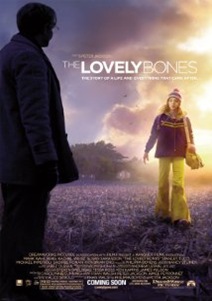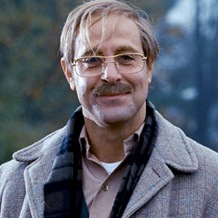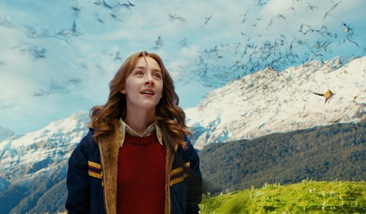2009
Director Peter Jackson
Are there two more different pieces of work than Sean Penn’s debut feature, The Pledge, and the animated world of the Super Mario Bros video games series? The answer, of course, is yes. Obviously there are more blatant polar opposites, but for the sake of this oh so insightful review, The Pledge and Super Mario are the opposite ends of the fucking universe; which is the central problem running through The Lovely Bones, Peter Jackson’s 2009 adaptation of Alice Sebold’s much loved 2002 novel. The conflict between light and dark, fantasy and realism, is a common dilemma for a great deal of fiction, not only cinema. There are some works that execute this blend perfectly, such as Guillermo Del Toro’s powerful Pan’s Labyrinth, but there are also plenty of notable failures, with the more recent X-Men instalments standing out from the crowd. Unfortunately, The Lovely Bones is much closer to latter.
Susie Salmon is fourteen-years-old when she is murdered by her neighbour George Harvey. However, this isn’t the end for the youngster, who finds herself caught in the ‘In-Between’, the place one goes before heaven, where she can observe the lives of those she has left behind. This includes her tormented, grieving family, and also her killer, who has now turned his attention to Susie’s sister.
Heavy stuff indeed. At the very least, starting your film with a child murder means the only way is up. Or is it? The tone of The Lovely Bones is so hard to identify because the pallet is constantly changing before your eyes. From the dark, grimy, murky world of Stanley Tucci’s monstrous killer George Harvey, to the eye-molesting CGI landscapes of the In-Between. It’s too much. Juxtaposed with the darkness of reality, this fantastical afterlife becomes comically ridiculous, which is probably not the response Peter Jackson was going for. Oversaturating effects can hinder films. It is possible to overlook this aspect in a piece such as X-Men Origins: Wolverine, because, well, the whole film is a stinking pile of adamantium shite. Peter Jackson’s 2005 remake of King Kong, though, is a flick that flirts with brilliance, but is held back by an overlong running time and, oh yes, so much CGI you will think that this is merely a ‘Cut Scene’, and that the actual game is about to begin at the end of the ninety-three hour (or somewhere close) slog.
The art of CGI use was arguably perfected by Jackson and company in The Lord of the Rings Trilogy, but his overreliance is now starting to grate. But how on earth do you depict the afterlife? The interpretation The Lovely Bones most resembles is the Robin Williams-starring What Dreams May Come. It’s bright, it’s colourful, it’s uplifting, and it’s an obvious attempt by the filmmakers to create a stark contrast. But it just doesn’t work. Locking my own beliefs away in the Atheist cupboard for the time being, who honestly believes this is what any form of afterlife resembles? You’re more likely to be attacked by angry mushrooms than encounter an angel. Good afterlifes are a challenge. Maybe Christopher Marlowe had the right idea when he wrote Dr Faustus: everything exists in the mind e.g. Hell is wherever God is not. That’s not that hard to depict surely? Then again ... he didn’t have Green Screen.
But the In-Between is not the entire film. There is an entire other narrative taking place in the real world, as Susie’s family struggles to cope with her untimely demise, and her killer plans his next move. This is where The Pledge comes in. One of the most underrated thrillers of recent times, Sean Penn’s 2001 directorial debut deals with similar themes to The Lovely Bones, as Jack Nicholson’s retired cop struggles to forget the murder of a child on his last day on the job. It is a thoughtful, methodical, moving, and incredibly powerful piece of work, and it is praise indeed to say that the darker half of The Lovely Bones conjures up fond memories of this modern day classic. This may be down to the performances. Mark Wahlberg and Rachel Weisz are at their understated best as Susie’s traumatised parents. The portrayal of the grieving family unit is never hammy, even if the depiction of young love occasionally strays into this schmaltzy territory. The absolute standout from this world is undoubtedly Stanley Tucci, unrecognisable as the heinous serial killer George Harvey. It might be a bit of a backhanded compliment, but, boy, can he play a child murderer or what? The voice, the face, the mannerisms, Tucci really does fill the screen whenever he appears. Saoirse Ronan is another superb addition to the cast as the recently offed Susie, although her performance is sadly affected by the Microsoft Paint world surrounding it.
The Lovely Bones is the very definition of a film of two halves. The only thing is, the two halves are nothing to do with the running time, but there structure in the narrative. Whenever we are in the real world, with real people with real problems, everything is fine and dandy. But whenever things take a plunge into the fruit pastille wet dream of the afterlife, all of the hard work Jackson and his team have done is overshadowed by this farcical fantasy. How to portray the afterlife: I guess we’ll never know...
*** ½ / *****



No comments:
Post a Comment